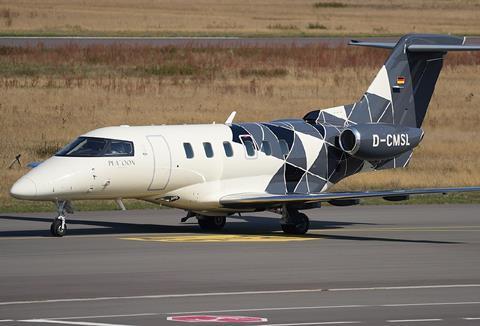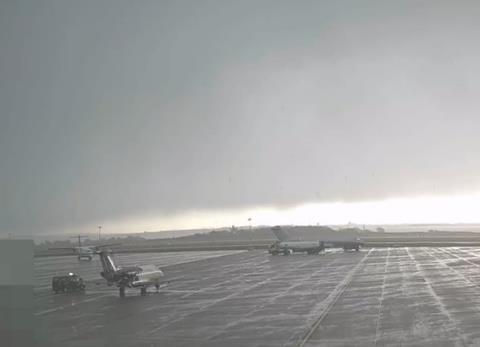UK investigators have been unable to determine why a Pilatus PC-24 jet’s elevator jammed during climb out of Liverpool, but point to the possibility that accumulated ice obstructed the aircraft’s control surfaces.
Two pilots were the only occupants of the jet which was conducting a flight to Birmingham on 9 December 2022.
While the air temperature had fallen below 0°C overnight the pilots had not observed any evidence of airframe icing during pre-flight checks, and did not require the jet to be de-iced prior to take-off.
The crew selected anti-icing for the engine nacelles and carried out ice-shedding procedures on the runway. No restrictions were encountered during flight-control checks.

After take-off the aircraft entered cloud and then levelled at 9,000ft, where it accelerated to about 250kt. But some 2min later the jet pitched 8° nose-down and lost 700ft of altitude.
The first officer, who was flying, instinctively pulled back on the control yoke and the autopilot disengaged. But the pilot found the pitch control to be “severely restricted”, says the Air Accidents Investigation Branch.
Applying large forces only resulted in small movements and the crew, following jammed-elevator procedures, used stabiliser trim to regain altitude.
When the first officer re-engaged the autopilot, the aircraft started to climb, so he disengaged it and continued with manual control.
The crew opted to proceed to Birmingham because the weather was better than at Liverpool, but the pilot had to maintain “significant pressure” on the yoke, says the inquiry.
This resistance, however, suddenly cleared leaving the pilot with elevator authority – although pitch control remained excessively heavy – and the autopilot was re-engaged.
As the aircraft descended towards Birmingham the captain took control and, as a precaution, disengaged the autopilot at 4,000ft in order to check controllability before final approach.

The captain found the pitch forces were less heavy, and this residual resistance disappeared during the approach. The crew landed the aircraft without difficulty under manual control.
Investigators determined that the aircraft’s dual ice-detectors “did not record the presence of ice at any point” during the flight.
Neither pilot had seen any airframe or canopy icing during the climb, nor could the crew see any evidence of control-surface restriction during a post-landing visual check. The inquiry could not identify any defect or damage to the aircraft.
“The possibility that the elevator restriction was caused by ice formation on the elevator control system could not be excluded,” it states, although it adds that external ice accretion was “unlikely” to be a factor.
Pilatus has not received any other operator reports of stiff or jammed elevators on PC-24s. The crew of the aircraft affected (D-CMSL) considered ice to be the probable cause, given the easing of control forces as the jet descended into warmer air.


























